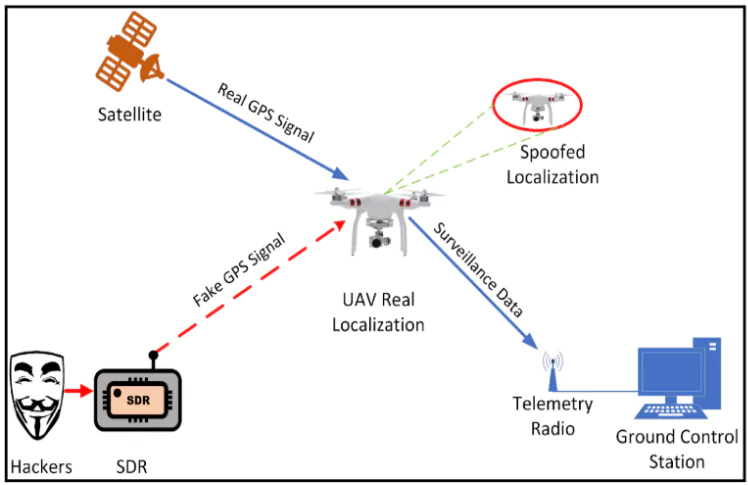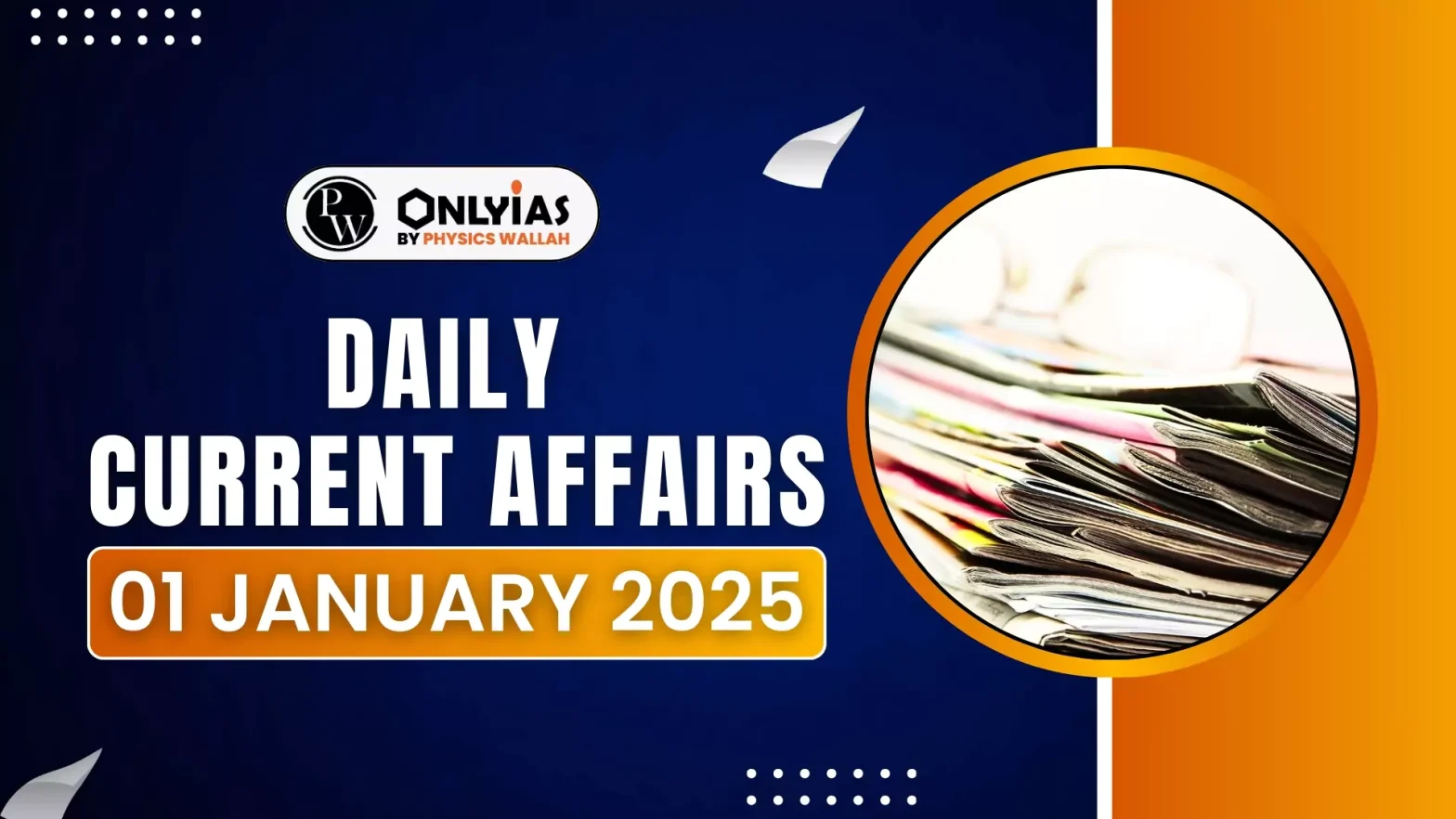Instances of GPS interference, including spoofing, have significantly increased near India’s borders with Pakistan and Myanmar, areas among the top five globally for such occurrences, according to OPSGROUP, a collective of 8,000 aviation personnel.
Key Observation made about GPS interference
- Spoofing: A cyberattack using false GPS signals to mislead navigation equipment, often seen in conflict zones.
- Global Increase: Daily impacted flights rose from 300 in January to 1,500 by August 2024.
- India’s Vulnerability: The Delhi Flight Information Region ranked ninth globally, with 316 aircraft impacted by spoofing between July and August.
- Specific Incidents: Pilots flying out of Amritsar frequently report losing GPS systems. Flights to Gulf destinations and Southeast Asia via Myanmar also experience interference.
- Recent Accident: Spoofing contributed to the December 25 Azerbaijan Airlines crash that killed 38 people, with Russia apologizing for air defense actions amid drone attacks.
Enroll now for UPSC Online Course
About GPS Interference
- GPS interference disrupts the reception of signals from GPS satellites, hindering accurate location and timing information.
- Different types of GPS Interference:
-
- Jamming: Intentional interference using strong signals that overwhelm GPS signals.
- Spoofing: Malicious transmissions of false GPS data, deceiving receivers about their location.
- Natural Interference: Atmospheric conditions (ionospheric disturbances) and solar activity can distort GPS signals.
- Man-made Interference: Radio frequency interference from electronic devices, communication systems, and industrial equipment.
- These interferences can impact navigation, timing systems, and various applications relying on GPS technology.
About Spoofing

- Spoofing is a cybersecurity technique where an attacker disguises their identity as a trusted source to gain unauthorized access or deceive victims.
- These techniques exploit trust and vulnerabilities to deceive victims and gain unauthorized access to systems or data.
Some common types of Spoofing are
- Email Spoofing: Forging the sender’s address in emails to trick recipients into opening malicious attachments or clicking on harmful links.
- IP Spoofing: Masking the origin of network traffic to appear as if it’s coming from a legitimate source, allowing attackers to bypass security measures.
- DNS Spoofing: Manipulating Domain Name System records to redirect users to malicious websites instead of the intended destination.
- Caller ID Spoofing: Displaying a fake phone number on the caller ID to trick recipients into answering calls from scammers.
- GPS Spoofing: Interfering with GPS signals to provide inaccurate location information, potentially leading to navigation errors or security breaches.
Check Out UPSC CSE Books From PW Store
About GPS Spoofing
- GPS Spoofing refers to the act of manipulating or deceiving a GPS receiver by broadcasting false GPS signals.
- It misleads the GPS receiver into providing inaccurate location data by making it believe it is in a different location.
- GPS data is crucial for applications such as navigation, time synchronization, and more.
- Spoofing is distinct from GPS jamming, where GPS signals are blocked or jammed entirely.
How Does GPS Spoofing Work?
Exploiting Weak Signals
- GPS spoofing exploits the weak signal strength of GPS satellites.
- Satellites transmit signals that Earth-based receivers analyze to determine their location by calculating the signal’s travel time.
Use of Fake Signals
- Attackers transmit fake GPS signals that are stronger than authentic ones, overpowering the legitimate signals.
- These counterfeit signals mislead the receiver into calculating inaccurate location data.
Attacker Methods: Attackers study a victim’s GPS setup to create counterfeit signals that closely mimic authentic ones, ensuring effective deception.
Impact of Spoofing
- Loss of Situational Awareness: Spoofing disrupts the pilot’s understanding of the aircraft’s position, potentially leading to incorrect flight paths and increased risk of collisions.
- Degraded Navigation Systems: Aircraft heavily rely on GPS for precise navigation. Spoofing can render these systems unreliable, forcing pilots to rely on less accurate backup systems.
- False Warnings and Alerts: Spoofing can trigger false alarms, such as ground proximity warnings or terrain alerts, creating confusion and potentially distracting the pilot.
- Difficulty Maintaining Control: Pilots describe the experience as “flying with hands tied” due to the uncertainty and lack of trust in their primary navigation systems.
- Increased Risk of Accidents: The combination of these factors significantly increases the risk of mid-air collisions, ground collisions, and other aviation accidents.
Enroll now for UPSC Online Classes
Mitigation Efforts to tackle GPS Interference
- International Cooperation: The International Civil Aviation Organisation (ICAO) has emphasized the need for international cooperation and coordination to address the escalating issue of GNSS interference.
- This includes ensuring that intentional disruptions for security purposes are conducted in a manner that minimizes the impact on civil aviation.
- Enhanced Surveillance and Monitoring: Implementing robust systems to detect and monitor GPS interference activities is crucial. This includes developing and deploying advanced sensors and signal processing techniques to identify sources of interference and track their activities.
- In November 2023, India’s DGCA advised airlines to create standard procedures and submit bi-monthly reports on GPS interference, though this data remains unavailable publicly.
- Technological Advancements: Investing in and developing more resilient GNSS receivers and navigation systems that are less susceptible to interference is essential.
- This could involve implementing techniques such as signal processing algorithms, multi-constellation receivers, and the use of alternative navigation systems like inertial navigation systems (INS) and radar.
- Regulatory Frameworks: Establishing clear and enforceable regulations to prohibit and deter malicious GPS interference activities.
- This includes international agreements and national legislation that address both intentional and unintentional interference sources.
![]() 1 Jan 2025
1 Jan 2025


